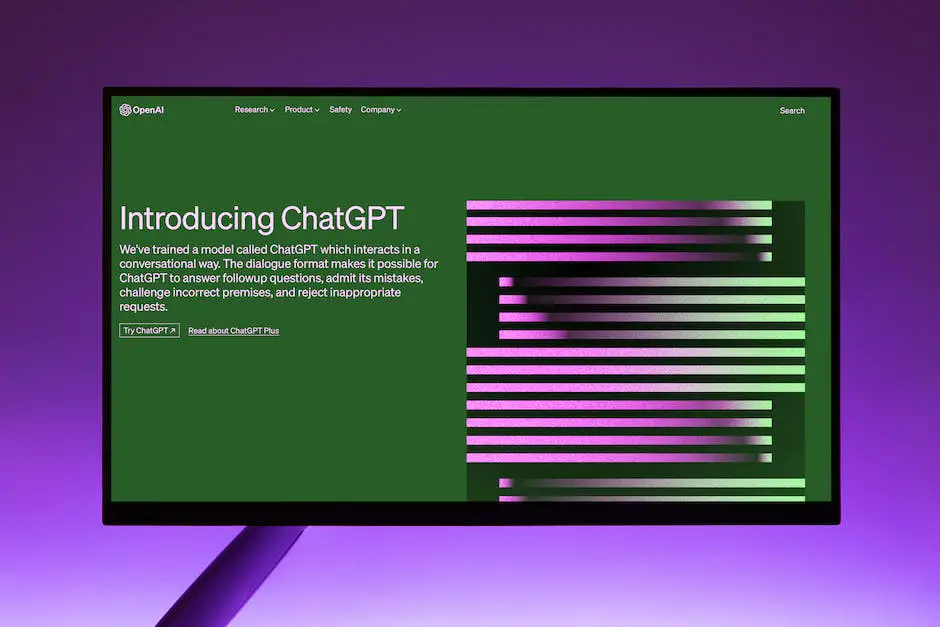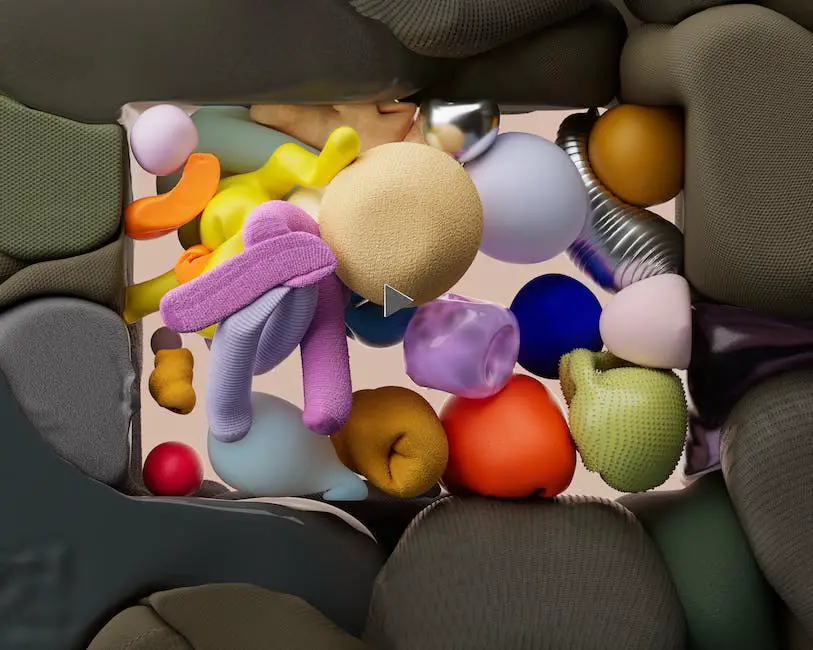Welcome to an exploratory journey into the world of artificial intelligence and web development. We’ll dive into understanding the workings and benefits of chatbots, especially the ones powered by AI like ChatGPT. Not only will we unravel this AI model by OpenAI, but we’ll also delve into how chatbots can revolutionize your website interactivity, providing users with a dynamic and conversational experience. To equip you with the necessary skills, we’re going to refresh our knowledge on web programming basics like HTML, CSS, and JavaScript. We’ll also look at the importance of API integration, specifically the OpenAI API for chatbot integration. By the end of this journey, you’ll be ready to bring a transformative touch to your website with a chatbot, all thanks to your newfound grasp of ChatGPT.
Understanding Chatbots
Understanding Chatbots
A chatbot is a software application that can simulate a conversation (or a chat) with a user in natural language through messaging applications, websites, mobile apps or over the telephone. They are often used in dialog systems for various practical purposes including customer service, request routing, or for information gathering. Unlike natural features, these dialog systems are able to process the user input and provide a response which stimulates the conversation and retains the user’s engagement on the platform.
There are two primary types of chatbots, each serving a distinct purpose. The first is goal-oriented chatbots, also called transactional or task-oriented chatbots. These chatbots are designed to perform specific tasks such as booking a flight, ordering food, or providing customer support. They are highly efficient and operate based on a predefined set of rules or scripts. Overtime, they improve with the use of machine learning to understand the nuances of human speech and interpret unstructured spoken or written input accurately.
The second type is the conversational chatbots, sometimes referred to as social or chit-chat bots. These chatbots aim for long, engaging conversations and are built to mimic human-like text interactions. They don’t have a specific task but instead seek to entertain the user or serve as a virtual companion. Conversational bots leverage advanced natural language processing systems to be more sophisticated in understanding and generating responses.
Achieving Website Interactivity with Chatbots
Integrating chatbots to your website can make it interactive and user-friendly and thus enhance the overall user experience. A chatbot available on your site can accomplish multiple tasks:
- Customer service: A chatbot can function as a customer service representative, answering queries about your business, products, or services at any time of the day. This functionality not only frees up your human personnel but also ensures your site visitors get the assistance they need instantly.
- Sales and marketing: Chatbots can provide product recommendations based on the user’s preferences. Additionally, they may also upsell or cross-sell products, driving sales growth.
- User engagement: By providing users with an immediate point of contact, chatbots ensure that they remain engaged on your site. This interaction can help keep users on your website longer and potentially convert them into customers.
- Feedback collection: Chatbots can ask users for their opinion on your services or products. This method is an unobtrusive way of collecting feedback and can provide valuable insights into areas of improvement.
- Lead Capture: Chatbots with the ability to capture user details such as email addresses can help in lead generation.
In conclusion, understanding what chatbots are and their types can serve as the starting point for creating a more interactive website. After deciding the type of chatbot you want to have for your website based on your needs, you can start developing or outsourcing the development process to make your website interactive and engaging.

Learning ChatGPT
Understanding ChatGPT
ChatGPT, an AI model developed by OpenAI, is a language processing tool designed to generate human-like text responses. It uses machine learning techniques to predict and construct sentences in a conversation, making it highly useful in a wide range of applications, including chat support, drafting emails, and more.
ChatGPT is based on the Generative Pretrained Transformer (GPT) model, which feeds on large amounts of text data to understand and generate human-like text. The AI model leverages the power of reinforcement learning from human feedback to make responses more accurate and contextually appropriate.
Learning about ChatGPT
The first step to using ChatGPT effectively is gaining a good understanding of the AI model. There are various resources available to learn about ChatGPT, including OpenAI’s research papers, guides, and community discussions. You can also explore OpenAI’s Playground to learn about the model’s capabilities and limitations.
ChatGPT Applications
ChatGPT is designed to fit into different applications such as customer service bots, virtual assistants, interactive chatbots for websites, and more. In any instance where a human-like text response is required, ChatGPT can make the communication process more efficient.
Integrating ChatGPT with websites
To make a website interactive using ChatGPT, you will need to integrate the API into your website. You need to have basic knowledge of coding languages like JavaScript, HTML, and CSS. Here’s a simplified process to achieve this:
- First, obtain the API key from the OpenAI website.
- Then, use this key to authenticate the connection between your website and the API.
- Next, you need to write a script that sends a user’s input to the API and fetches the GPT-generated response.
- Finally, you can display this response on your website in the chat interface.
Improving Skills
To improve your skills with ChatGPT, the best method is experimenting and continuous learning. You can train the model using custom prompts and see how it responds. You must understand the set of principles the model follows while generating a response. You can also participate in OpenAI’s community discussions to keep abreast of new advancements and best practices in AI.
Remember that while ChatGPT is a powerful AI model, it is important to regularly review and evaluate the responses it generates to ensure its appropriateness and accuracy in the given context.

Web Programming Basics
Understanding HTML, CSS and JavaScript
HTML, CSS, and JavaScript form the backbone of web development. HTML (HyperText Markup Language) is used to structure the content on a website, including text, images, and other media. CSS (Cascading Style Sheets) is a presentation language used to style and layout web pages – for example, to alter text colors, change fonts, or add background images. JavaScript enables interactive elements on a webpage.
Writing Basic HTML Code
To start with HTML, you need to understand the concept of elements, attributes, and tags. HTML elements represent the different parts of a webpage, and they are marked by HTML tags. For instance, the <p> element is used for paragraphs, <h1> to <h6> elements for headings, <a> for links, and so on.
An HTML document begins and ends with <!DOCTYPE html> and <html> tags respectively. The <head> tag includes meta-information about the document, and the <body> tag contains the webpage’s content.
Here’s an example of a simple HTML code:
<!DOCTYPE html>
<html>
<head>
<title>Page Title</title>
</head>
<body>
<h1>This is a Heading</h1>
<p>This is a paragraph.</p>
<a href='https://www.example.com'>This is a link.</a>
</body>
</html>
Creating Styles with CSS
CSS can be added to HTML in three ways: Inline – by using the style attribute inside HTML elements; Internal – by using a <style> element in the <head> section; External – by using a .css file.
Here’s how you can change the color of a paragraph text to blue using inline CSS:
<p style='color:blue;'>This is a paragraph.</p>
Using a separate CSS file provides a cleaner structure and is recommended for larger websites. In such cases, you’d link your HTML file with your .css file using a <link> element in your head tag.
Adding Interaction with JavaScript
JavaScript is what makes your website interactive. It can update and change HTML and CSS, can calculate, manipulate, and validate data.
In HTML, JavaScript code is inserted between <script> and </script> tags. You can place these tags inside <head> or <body> as per requirements. For external JavaScript files, use the src attribute in the <script> tag.
Here’s a simple JavaScript code to change the text of a paragraph when a button is clicked:
In HTML:
<button onclick='changeText()'>Click me</button>
<p id='demo'>This is a paragraph.</p>
In JavaScript:
function changeText() {
document.getElementById('demo').innerHTML = 'Hello, World!';
}
Integrating Chatbots with ChatGPT
After understanding these basics, you can move on to incorporating a chatbot, such as ChatGPT, into your site. OpenAI provides an API to help with this. Firstly, you need to acquire API keys from OpenAI. Then, by using JavaScript fetch API or a library like Axios, send a POST request to the OpenAI API endpoint with your API keys and the chat message from the user. On receiving a response, display it on your website for the user’s view. Be sure to program your application to handle errors and retries, as network requests may fail occasionally.

API integration
Understanding the Basics of APIs
APIs, or Application Programming Interfaces, act as intermediaries that allow two different applications to communicate with each other. In the context of web development, APIs can be used to create interactive features, boost the functionality of a website, and integrate third-party services. Examples of such integrations could be payment gateways, social media sharing, weather updates, and more.
The OpenAI API for ChatGPT
One such API you can integrate for interactive purposes is the OpenAI API for the chat version of GPT, known as ChatGPT. The OpenAI API provides developers access to the ChatGPT model, allowing them to facilitate conversational interactions on their websites. Users can pose queries and the ChatGPT model will provide a useful and interactive response. This function serves to add a dynamic touch to the usuail static webpages, ultimately enhancing user engagement.
Setting Up the OpenAI API
To commence, an API key is required from OpenAI. Once you create an account with OpenAI, you would get access to the API key. You also need to have Python installed on your server as the OpenAI API utilizes Python. The API key should be kept secure and stored safely as it provides access to your account’s functionalities. The ChatGPT API can then be set up by using the OpenAI Python client library.
Implementing the OpenAI API
The API can be implemented using a few lines of Python code where you import the OpenAI library, set up your API key, and use the OpenAI.ChatCompletion.create function to initiate a conversation with the model. In your HTTP request, include ‘openai_secret’ as your authentication password which is your actual API key.
Integrating OpenAI API with your Website
The integration of the API into your website would largely depend on the technology stack of your website. Most often, you’d create a back-end service that makes use of the Python client to interact with the OpenAI API. This back-end service would then be used by your website’s front-end to interactively communicate with users using AJAX, Websockets or any other form of real-time communication mechanism.
Remember, all communications with the OpenAI API should be handled server-side due to the sensitivity of the API key. Never expose your API key in client-side code such as JavaScript running in the browser.

Building and Testing Your Chatbot
Establishing a Basic Bot Functionality with ChatGPT
Creating a chatbot requires you to first sign up for OpenAI’s GPT-3. It’s the technology that powers ChatGPT. Once you have the necessary access, you can start building the core functionality of your chatbot using programming languages such as Python. It’s all about sending requests to the API, which contains the model’s instructions and responses.
Here’s a simple example of how to send a request:
import openai
openai.api_key = 'your-api-key'
response = openai.ChatCompletion.create(
model="gpt-3.5-turbo",
messages=[
{"role": "system", "content": "You are a helpful assistant."},
{"role": "user", "content": "Who won the world series in 2020?"},
]
)
In this code, you’re telling the assistant -in this case, your chatbot- what its role is, and then asking a question. The assistant will respond accordingly.
Integrating the Chatbot into a Website
After building the core functionality of the chatbot, you need to integrate it into your website. This can be accomplished by creating a user interface (html/css/js) where conversations with your chatbot will take place. Then you need to create endpoints in your server to handle the chat sessions and communicate with the GPT-3 model.
The front-end should have the logic to send user message to the server then the server will do a post request to GPT-3 and return the response back to the front end to be displayed in chat.
An example of an endpoint in Python using Flask can look like this:
@app.route('/message', methods=['POST'])
def message():
request_data = request.json
message = request_data['message']
#This is where you use the code to send requests to the GPT-3 API
response = get_gpt3_response(message)
return jsonify(response)
Monitoring and Optimizing the Chatbot
After your chatbot is up and running, you should continually monitor its performance and optimize it based on user interactions. OpenAI provides usage stats that allow you to see how many tokens comprising the API calls your application is using.
It’s also crucial to gather feedback from users and improve the model based on this feedback. This might involve adjusting and optimizing the parameters and prompts used for the GPT model in the OpenAI API.
To make iterative changes, you need to observe the performance of your bot, collect user feedback and adjust your configurations as needed. Record problematic conversations and adjust your bot’s model to cater to them. Don’t forget to routinely test your bot after making adjustments to ensure it functions properly and offers more improved interactions.
Remember, building a competent chatbot is an iterative process. Monitor, analyze, and refine your bot for the best results.

As you took this adventure, you’ve gained not just theoretical knowledge but also practical understanding, having dwelled into chatbot creation, integration, and improvement using ChatGPT. Now that you are equipped with both the understanding of ChatGPT and web programming basics, you’re poised to enrich your websites with interactive realms. Your ability to integrate APIs will prove instrumental in amplifying your web experience, and the cycle of building, testing, and optimizing your chatbot will continue to enhance your user engagement. Here’s to a future where every website is an interactive, personalized journey for the visitor, powered by intelligent chatbots and your innovative spirit!
